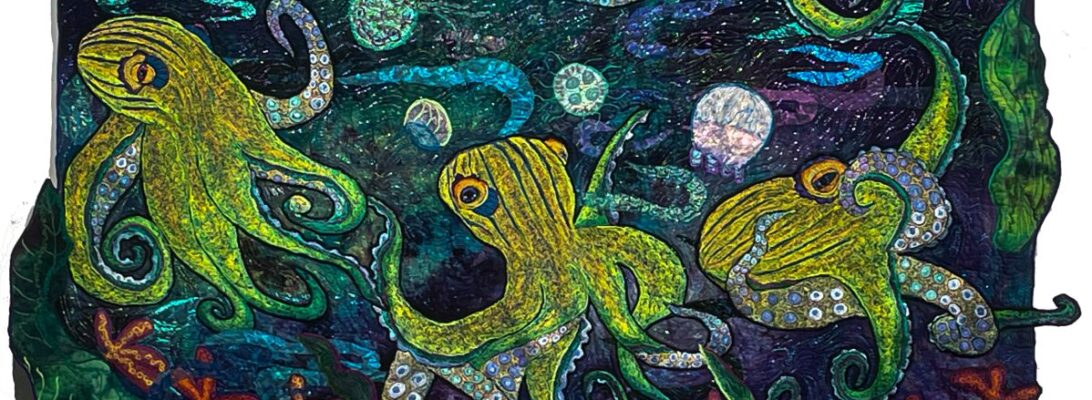
This last year has been a disaster for my sewing machines. Most of my work depends on intense embroidery. Lately I’ve depended more and more on that stitchery for my images. I love it. But it does wear and tear on the machines. I had 6 major machine breakdowns. last year. I broke down 3 220s, my 770, my 630 and a 930. Some have fixed. Some have not.
I’m a Bernina girl from way back and have been a Bernina Ambassador for most of my career. I work with Berninas because they are tough and they stitch accurately. That doesn’t mean they don’t break down, Particularly if you’re sewing at speed demon speed for hours on end. I was told this is my fault.
I suppose it is. It’s what I do. I can either back away from this kind of stitching or find another way.






Zigzag embroidery allows for intense detail and color, I can’t step away from it. I also can’t keep breaking machines. So something has to change.
Don is my miracle in this. He’s a wizard with older small motors. He’s not specialized in sewing machines, but very mechanically savvy. He’s collecting manuals and parts machines. As always, he’s my hero.
I really can’t function though without a working machine and I prefer 2 backups. I’m not exa sane without a sewing machine.
Years ago I bought a 20 U Singer for intense embroidery. That’s not what these machines are known for. In a way, they’re the cockroach of the sewing machine world. Not in the sense that they hide under the cupboards, but because they are pretty much unkillable. You find them most often in dry cleaner shops for repairs.
It was a mixed success. This thing eats babies and cats, breaks thread constantly, and is fast—too fast—even with different slower pulleys. And it was the weight of a tiny elephant. When I left Porter, I left it in my studio, where it has sat.
Ken, the person renting my house, offered to bring it to me. That in itself is a huge glft But I’ve had my reservations about making this machine work. I first felt I was stepping backward, Is it an answer to the same problem? Is this machine tough enough?
Well, we know it’s tough. Can we make it work with embroidery thread? There’s the question. It’s also paid for.
It had its problems before. But things have changed. I now use stronger threads. I no longer work in a hoop. And we found that a servo motor would step down the speed. So it’s coming to the studio sometime this month, and we try it out. I’ve gone from feeling like I’m stepping back to seeing new possibilities.
You can’t step in the same river twice. You are different and the water is different.
I’m digging out the studio this week to make room, which is why I don’t have new work to show you. I’ll let you know what happens next.
Wish me luck. I think it’s time for another spoonbill.




























